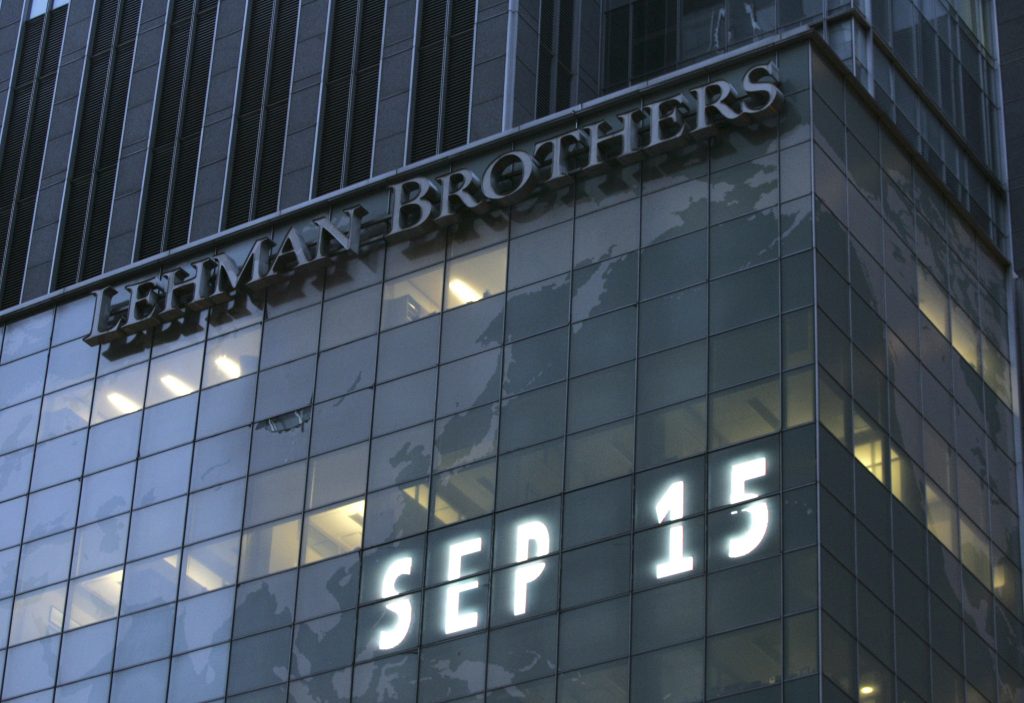News
How Lehman’s collapse 15 years ago changed the U.S. mortgage industry
By: Joe Hernandez I NPR
Posted on:
WASHINGTON, D.C. (NPR) — Fifteen years ago, the world witnessed the largest commercial collapse in history.
The financial giant Lehman Brothers filed for bankruptcy on Sept. 15, 2008, with $613 billion in debt, putting thousands of employees out of work and sending the already recessionary economy into a tailspin.

Now, a decade and a half later, housing experts say it’s a lot safer for homebuyers to secure a mortgage they’ll be able to pay off in the long run.
“Borrowers often assumed [before the financial crisis] that if the lender was making the loan available, it would be safe, but [that was] not true,” said Susan Wachter, a professor of real estate and finance at the Wharton School at the University of Pennsylvania.
“In today’s market, lenders have embraced safe loans, and you can be pretty sure that you will be offered a safe loan,” Wachter added.
Still, there’s worry that some of the financial guardrails put in place after the 2008 financial crisis to secure the mortgage market won’t be around forever.
The role of mortgages in the global financial crisis
Founded as a general store in 1844, Lehman Brothers went on to transform itself into an investment banking powerhouse. By the early 2000s, Lehman began underwriting mortgages and offering mortgage-backed securities alongside other Wall Street investment banks that had likewise gotten into the mortgage business.
The problem was that many of those mortgages were subprime, with dodgy terms and low or no down payments. With little regulation, lenders were left to compete among themselves to sell the most lucrative mortgages with minimal guidelines.
When housing prices dropped and homeowners couldn’t afford their payments or refinance their mortgages, they defaulted on their loans. Millions of people had their homes foreclosed, and mortgage-backed securities made up of bundled subprime loans also tanked, thrashing investors.
In 2008, the global economy crashed.
The mortgage industry in 2008 vs. 2023
What followed was a tense public debate over whether and how the federal government should help the financial industry recover in the short-term to stave off total economic calamity, but many also wondered what could be done to prevent a similar situation from happening again.
Banks had to meet new liquidity standards and were subject to regular stress-testing, but policymakers also took steps to protect consumers.
In 2010 President Barack Obama signed the Dodd-Frank Wall Street Reform and Consumer Protection Act, part of which established a new federal government agency charged with protecting the interests of borrowers: the Consumer Financial Protection Bureau.
One of the efforts of the CFPB in the years after the economic collapse was to put forward a new set of standards for mortgages. The agency aimed to set a benchmark for safe loans in the wake of a crisis worsened by risky lending.
The CFPB’s Qualified Mortgage standards, which are still present today, prohibit interest-only loans and sizable “balloon” payments, ban excess fees and require lenders to verify a borrower’s income, assets and debts. Wachter says the “common sense” rules helped boost confidence in the mortgage market.
Another law from that time required mortgage brokers — also known as loan originators — to meet certain licensing requirements.
“It did force the industry to make sure that everyone that is dealing directly with the consumer is truly a mortgage professional and does have licensing standards,” said Valerie Saunders, a loan originator in Florida.
Saunders, who is also president-elect of the National Association of Mortgage Brokers, says products such as interest-only loans and balloon payments still do exist, but that the options for borrowers are generally safer these days.
“If you’re a first-time homebuyer, get yourself the most secure loan that is fully amortized, that you understand, that you’re comfortable with, that you’re going to be able to continue to make that payment until you decide to refinance it, sell it or pay the loan off,” she said.
The future of the housing market is uncertain
Though the financial crisis led to increased protections for borrowers, some of those post-crash guardrails may be faltering.
A three-judge federal court panel ruled last year that funding for the Consumer Financial Protection Bureau is unconstitutional because it gets its money from the Federal Reserve, which itself is funded through bank fees.
The U.S. Supreme Court has agreed to take up the case, which could threaten the existence of the bureau and the work it’s done. No decision is expected before 2024.
This year mortgage interest rates hit their highest levels since before the 2008 financial crisis. A 30-year, fixed rate home loan reached 7.09% in August, the costliest it’s been since 2002.
Recent spikes in mortgage rates have caused some borrowers to turn to home loans such as adjustable rate mortgages, which can have lower interest rates at the beginning but increase later, though those loans are different from the predatory mortgages sold during the financial crisis.
Wachter also worries that mortgage finance firms Fannie Mae and Freddie Mac, which the Bush administration placed into a conservatorship in 2008, could be privatized.
The Federal Housing Finance Agency currently controls Fannie and Freddie, which insure mortgages and also turn home loans into mortgage-backed securities. Wachter says the federal government mostly deals with safer, less risky loans.
“But if we undid that oversight, and if FHFA went away or became a less strong regulator, we might be back in the Wild West of lenders competing on mortgage terms,” Wachter said. “We surely don’t want to go there.”
9(MDU1ODUxOTA3MDE2MDQwNjY2NjEyM2Q3ZA000))

